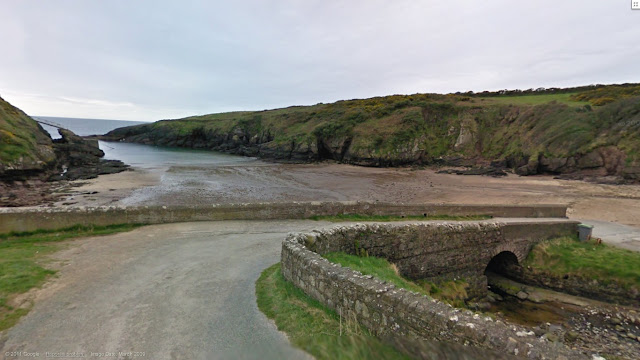 |
| Leaving Glengory by the Sea in Tramore. |
 |
| I thought since I'd stayed seaside I better see the sea. This is looking down The Cove, Tramore. |
 |
| The Cove, Tramore. Beautiful. |
 |
| Looking back up the hill at The Cove, lifeguard station on the left and strange building built into the hill on the right. |
 |
| On the hunt for the White Lady at Ballymacaw. |
 |
| This would be as close as I would get. |
 |
| The 12th century ruins of Ardmore tower, Main Street, Ardmore. |
 |
| Cliff Road, Ardmore. |
 |
| On the hunt for the Giant's Grave standing stone past Clonmel. |
 |
| View of Croughaun Hill in cloud from Fallagh. |
 |
| Northward ho! |
 |
| The R678 at Rathgormack |
 |
| The Curraghkiely Ring Fort (middle of picture). |
 |
| Driving around Clonmel looking for the Giant's Grave I came across a quaint suburb - Ard na Sidhe. |
 |
| Nevermore by the roadside of the R688. |
 |
| Disheartened, I moved on to Cashel. It will never cease to blow my mind that people live in and around these beautiful, ancient buildings. |
 |
| Now on the hunt for the Rock of Cashel. Houses so close to a 12th century wall! |
 |
| My first glimpse of the Cashel of the Kings over the top of Dowling's Garage and Fuel Merchants. |
 |
| The Rock of Cashel (Irish: Carraig Phádraig), also known as Cashel of the Kings and St. Patrick's Rock, is a historic site in Ireland's province of Munster. |
 |
| I think I've found the way! |
 |
| So exciting! |
 |
| The tower was built using the dry stone method. Modern conservationists have filled in some of the tower with mortar for safety reasons. |
 |
| Oh gods, oh gods, so close! |
 |
| Squee! |
 |
| This would be as close as I could get. |
 |
| I decided to head north to see if I could get a better view. |
 |
| Imagine seeing this on your way to work every morning? |
 |
| Coming back from Devil's Bit along the R660. |
 |
| In 1749 the main cathedral roof was removed by Arthur Price, Bishop of Cashel. |
 |
| By bed for the night - Cashel Town B&B on John Street. |













No comments:
Post a Comment